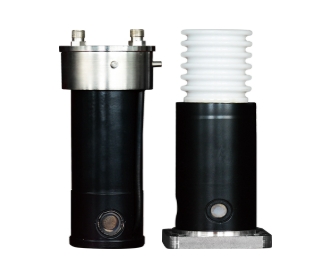
New Standard for Inspection in the Industry 4.0 Era
2025-05-07 16:21Special corrugated ceramic tubes, metal ceramic tubes, and glass tubes for analytical instruments, suitable for various models of XRD, XRF, crystal analyzers, and orientation instruments at home and abroad. An X-ray tube is a vacuum electronic device that generates X-rays by high-speed electron impact on a metal target material. Its structure, principle, and application involve various technical characteristics.
1. Basic structure of X-ray tube
(1) Cathode (electron emission source)
Composed of tungsten filament, X-ray tube heats up and emits electrons after being powered on, and is wrapped around a focusing cover (cathode head) to control the direction of the electron beam. The filament temperature is about 2000K, and the electron emission is regulated by current.
(2) Anode (target material)
Usually high melting point metals (such as tungsten, molybdenum, rhodium, etc.) are used to withstand high-energy electron bombardment and generate X-rays. Contains anode head (target surface), anode cap, glass ring, and anode handle, responsible for heat dissipation (through radiation or conduction) and absorption of secondary electrons.
(3) Vacuum shell and window
Glass or ceramic shell maintains a high vacuum environment (not less than 10 ⁻⁴ Pa) to avoid electron scattering. Window materials require low X-ray absorption, commonly using beryllium sheets, aluminum, or Lindemann glass.
2. Working principle of X-ray tube
(1) Electron Acceleration and Impact
The electrons emitted by the cathode filament are accelerated by high voltage (in the range of kilovolts to megavolts) and collide with the anode target material. The process of converting electronic kinetic energy into X-rays includes:
Bremsstrahlung: Continuous spectrum X-rays released when electrons decelerate or deflect.
Characteristic radiation: X-rays (such as Kα and Kβ lines) released by electron transitions in the inner layer of the target material.
(2) Energy Conversion and Efficiency
Only about 1% of the electron energy is converted into X-rays, and the remaining is dissipated in the form of heat, requiring forced cooling (such as a rotating anode design).
3. Classification and application scenarios of X-ray tubes
(1) By generating electronic means
Inflatable tube: an early type that relies on gas ionization to generate electrons, with low power and short lifespan (now obsolete).
Vacuum tube: Modern mainstream, high vacuum environment improves electronic efficiency and stability.
(2) By purpose
In the medical field, diagnostic (such as dental and breast examinations) and therapeutic (such as radiotherapy) X-ray tube often use rotating anodes to increase power density.
Industrial testing: non-destructive testing, material structure analysis, etc., with a focus on high penetration (hard X-rays).
(3) According to the cooling method
Fixed anode: simple structure, suitable for low-power scenarios.
Rotating anode: The target surface rotates at high speed (up to 10000 revolutions per minute) to improve heat dissipation and support high-power output.
4. Performance characteristics and limitations of X-ray tubes
(1) Advantages
Low cost, small size, easy operation, suitable for routine medical and industrial testing. Flexible adjustment of target materials (such as tungsten, molybdenum, copper) to meet different energy requirements.
(2) Limitations
Poor brightness and collimation, large X-ray divergence angle, requiring additional collimators. The energy spectrum is continuous and contains characteristic lines, requiring filtering or monochromatization (such as using nickel filters to remove Kβ lines).
5. Comparison between X-ray tubes and synchrotron radiation sources
(1) Brightness and flux
X-ray tube: Low brightness, suitable for routine testing. Synchrotron radiation light source: with a brightness 106~1012times higher, suitable for cutting-edge research such as nanoimaging and protein crystallography.
(2) Spectral characteristics
X-ray tube: Discrete characteristic lines+continuous spectrum, energy range limited by acceleration voltage.
Synchrotron radiation: wide continuous spectrum (from infrared to hard X-rays), precisely tunable.
(3) Time characteristics
X-ray tube: Continuous or microsecond level pulses (rotating target).
Synchrotron radiation: Femtosecond level pulses, suitable for studying dynamic processes such as chemical reactions.
6. Technical parameters of X-ray tube
(1) Optional target material types: Cu, Co, Fe, Cr, Mo, Ti, W, etc
(2) Focus type: 0.2 × 12mm2 or 1 × 10mm2 or 0.4 × 14mm2 (fine focus)
(3) Larger output power: 2.4kW or 2.7kW
Overall, X-ray tube dominate in fields such as medical diagnosis and industrial testing due to their practicality and economy, but are limited by performance bottlenecks. For scenes that require high resolution and high brightness (such as cutting-edge scientific research), advanced technologies such as synchrotron radiation sources need to be relied upon. Future development directions include improving energy conversion efficiency, optimizing heat dissipation structures, and developing miniaturized X-ray sources.

